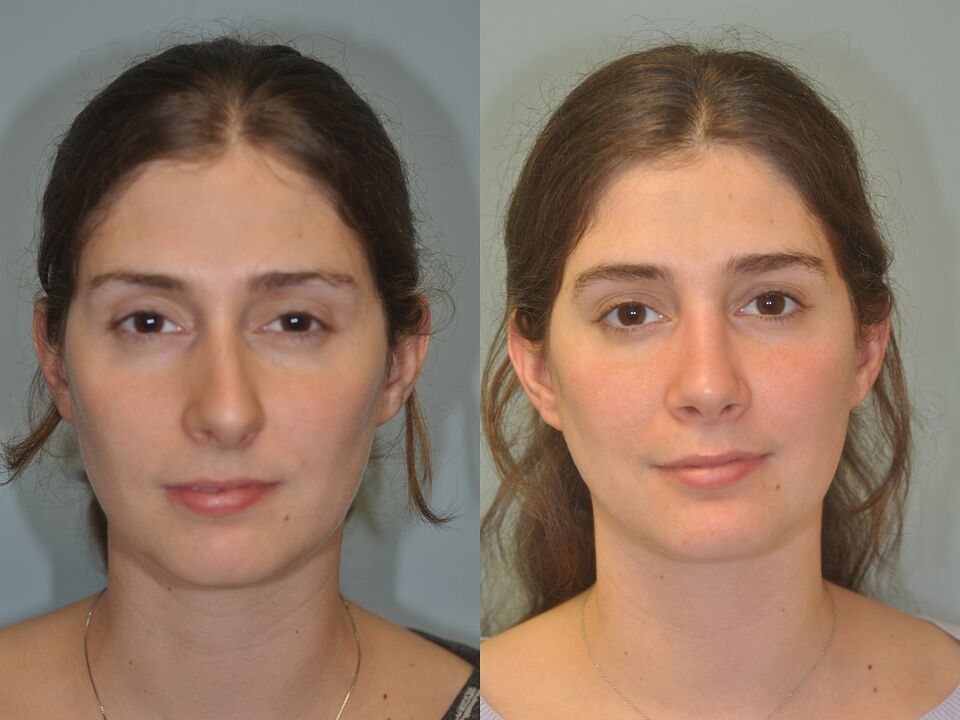
Rhinoplasty (formed from two Greek words with the meaning of "plastic", is part of the plastic surgery, and the correction of the embrioogenesis) and the nasal deformations acquired throughout life. This is a plastic nose. Distinguish open, closed and closed and closedNehibaous rhinoplastics. In most cases, aesthetic and functional shortcomings are eliminated by surgical.
Initially, the correction was made only in connection with injuries, serious diseases and noticeable innate damage.Later, plastic surgery began to dissolve, most often, according to aesthetic indications, in order to change the look of the nose.For example, remove the coat of arms, reduce the top, raise your nose bridge, reduce your nostrils and so on. A small story. The first time the surgeon of the ancient world was made by rhinoplasty. She mentioned her in the ancient manuscript "Ayurveda" from OK.1000 km This document records most of the facts in terms of antiquity medicine.The renovation of the unit of persons required wars and people who were mutilated in the battle during the execution of the court sentence.Currently, the transplantation began history.As a correction material, the skin or skin is taken in the forehead.Indian technology has been developed over time so that in the Middle Ages even European doctors mastered, successfully operated on patients.

Indications for rhinoplasty
Rhinoplasty is done according to medical and aesthetic indications.In other words, one person simply don't like what the nose looks like.It can be with humps or curves, too much or a small, wide or narrower, squeezed - found or long, with large or asymmetrical nostrils.And this happens that one's nose is distorted from birth or due to a blow (until he can often breathe and the surgery is needed to return the nasal breathing).Frequent cases are when the operation is needed to correct the appearance of appearance after the first unsuccessful plasticity (this is considered the most severe surgical intervention).The operation is allowed only to persons over the age of 18 (if there is no emergency medical indications).This is due to the fact that bone tissue is formed by eighteen years, and the cartilage is even until twenty.That is why it is the most appropriate age for rhinoplasty from 20-35 years.The following is a description of the most common problems that men and women turn into the rhino surgeons.
Nose with the coat of arms
The essence of the problem: there is a small shrub on the back of the nose, which makes the nose look more massive, and the face is grumpy and dissatisfied.Reason: Defect can be innate, may appear after injury or may result in a previously unsuccessful correction.Method of removal: In most cases, in plastic surgery, the bush is removed with a closed or open method under general anesthesia.If the back of the nose is too broad, it is necessary to work rhinoplasty from osteotomy (rapprochement of the back bone)
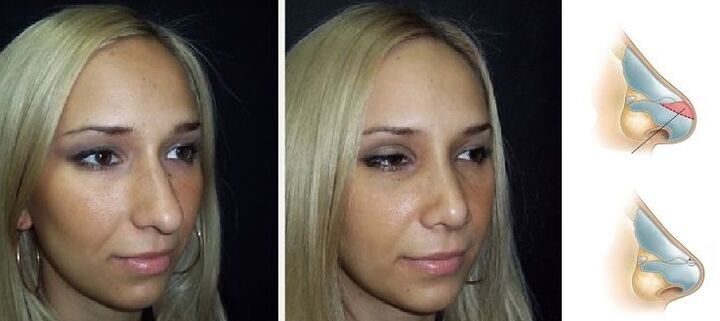
Wide back nose
The essence of the problem: a person has a very wide nose, which makes her face massive and rude.Reasons: Defect may appear after injury, be innate or become a result of unsuccessful removal of the coat of arms.Resolution method: Open correction with osteotomy under general anesthesia.The essence of this technique is that the part of the bone is removed in the back, and then the secondary parts gather.
Nosy's nose distorted
The essence of the problem: the back of the nose is asymmetric.Due to curvature often a person cannot breathe at all.This problem relates to functional indications for the surgical correction.As a malfunction occurs: In most cases, it is the result of fracture.Although it happens that the nasal partition is curved as a result of intense growth of skull bones during growing up.Is it possible to correct your nose? In most cases, partition equalization operation (septoplastics) passes into a closed method under local anesthesia.The essence of the operation is shown in the diagram below.If this is not enough, in such cases, rhino -ptoplasty is resorted (when the partition correction is combined with removing other nose forms).In cases where injuries are quite serious, reconstructive plastics (more serious surgical intervention that is often done in several phases), this part of plastic surgery is studying nose reconstruction methods after serious injuries and in cases of its complete absence.The task of the surgeon in this case is the renewal of bone and skin base integrity.
Noseface
The essence of the problem: nose is too low.Therefore, the shape of the nose resembles a saddle in the profile.Reason: Defect can be innate, can occur as a result of injury when part of the bone or cartilage is damaged.How can you change the situation? The correct form was renovated by transplanting Kostal cartilage, auricular cartilage (on the outer side of the ear) or implanting a synthetic implant.
A big nose
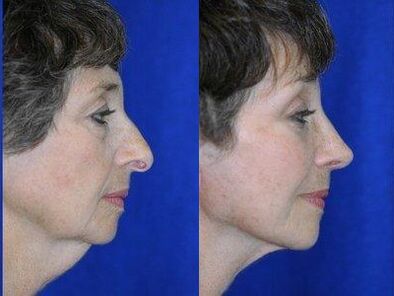
The essence of the problem. Excessive (long or wide) nose makes the face disproportionately.Most often, in such cases the top is very thickened.Reason: Defect is most commonly congenitant. How do you solve the problem? The nature of surgical intervention depends on the cause (in some cases, it is necessary to reduce the top of the top, in others the nasal wings are reduced, but it happens that it is necessary to remove the coat of arms).Before you decide that it is possible to make plastic surgeons often resort to computer modeling 3D.This allows you to see even before surgery that the face will look, after the procedure.
Problem shape of the tip of the nose
The essence of the problem: the correct proportions of the faces are violated due to the wrong form of the nasal tip.For example, it may be:
- Narrow
- Wide
- Round (nose with potatoes or bulbous)
- Lowed (crochet)
- Raised (Kurting)
- Bifurped
How do you solve the problem? The course of the operation is devised depending on the type of problem.
- In order to reduce the wide advice, it is enough to bind the dome of a large cartilage, and in others, it is further necessary for shortening the part of the cartilage tissue.
- Round meat advice More often, part of the cartilage should be removed, followed by the closer to the dome, often reduces wings during the operation.
- The bifurced tip of the nose must install transplant from their own cartilage recorded in the area of ear or ribs or from synthetic material.
- Tip may look too narrow because of the disruption associated with losing the stiffness of the side legs of the cartilage.They are reinforced, also use transplants.
- During the correction of the lower tip of the nose, the surgeon removes the part of the cartilage and raises it with stitching, fixing it into a new position.
- Another operation of the operation involves strengthening the nose columel to ensure good support supreme.
- There is a third method associated with the cabinet of the inner muscle, after which the tip pulls upwards
- Kourneability is also eliminated in several ways that include installation of own or synthetic transplants on top of the top or nose.
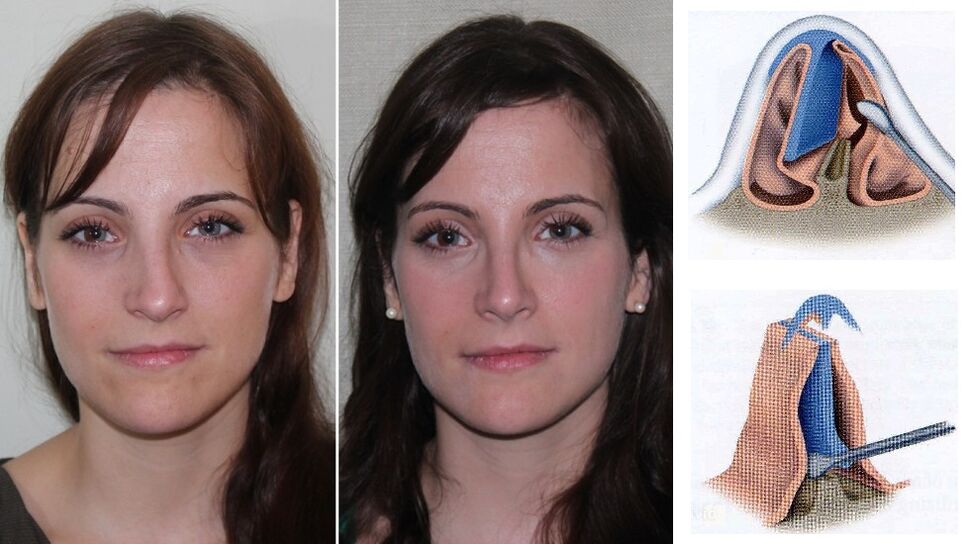
Large or different nostrils
The essence of the problem: a disproportionate nostril size (too small or too much) or significant asymmetry can disrupt harmony and deteriorates the appearance of the face.How to eliminate the breakdown? The surgery course depends on the source of the problem.They can sew their wings of the nose, may be needed to strengthen the dome of retired cartilage, and in some cases, nasal septum is aligned.This is happening that it is necessary to raise or reduce the long tip of the nose
Contraindications for rhinoplasty
For absolute contraindications in which rhinoplasty should not be in any case:
- Diabetes I, type II
- Coronary heart disease and other diseases of heavy cardiovascular diseases in which general anesthesia is contraindicated
- Meningitis, tuberculosis, gonorrhea, brucellosis and other serious viral infectious diseases
- Systemic diseases: red lupus, HIV, lepros.
- Allergic reaction to anesthesia components.
- Chronic diseases: liver cirrhosis, hepatitis, etc.
- Cancer
- Bronchial asthma
- Blood coagulation problems
- Mental illness
Relative contraindications (rhinoplasty can be done if the disease is cured) relate:
- Age by 18 years (correction is acceptable only in the most extreme cases)
- Deterioration of inflammatory diseases (sore throat, frontal, sinusitis, otitis media)
- Ars, SARS
- Leathery
- Age after 50 years (surgery is done if there are no chronic diseases related to absolute contraindications)
- Pregnancy, breastfeeding, menstruation
How Rhinoplasty Passes
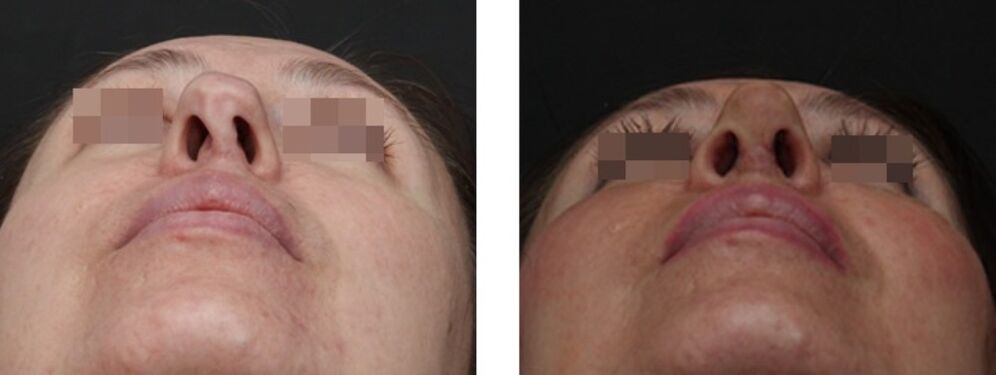
Rhinoplasty is done only under general anesthesia.The duration of the procedure depends on the complexity of surgical intervention and varies from 30 minutes to 2 hours.During the first consultation, the doctor offers 3D modeling to achieve a complete understanding with the patient.This helps show a person who can expect the final result.When he imagines that he is shown in the end, it is easier for him to be aware of the choice.Before surgery, the patient should pass a general and biochemical blood test and a general urine test.It will also need to take a blood test for HIV and blood testing analysis for Protombin.It will be necessary to make an electrocardiogram and perform inspection with profile doctors if necessary.The preparation of the patient in the preoperative period includes the following recommendations:
Two weeks before surgery:
- Refuse to drink alcohol (especially carbonated)
- Don't take a blood to thin a blood
- They don't sunbathe
- Not smoking
Week before proceedings:
- Obtain all the necessary medications
- Reduce the use of cosmetics
- Buy contact lenses to replace glasses (for people with bad vision)
10 hours before surgery:
- Don't drink anything (or drink minimal amount of liquid)
- Do not use perfume and cosmetics
- Prepare clothes that don't need to be removed over your head
- Remove jewelry
Rehabilitation after rhinoplasty
Complete tissue restoration after rhinoplasty occurs one year after surgery.In order to accelerate the process of healing and avoid the occurrence of undesirable consequences, it is extremely important to observe the doctor's recommendations in the postoperative period.The first days after surgery, the patient is uncomfortable due to the fact that he must constantly carry plaster and withstand tampons in the nose.This means that you can only breathe your mouth, your mouth is often drying.The temperature can be increased.I want to drink.It's hard to wash and brush your teeth.Remove the plaster and remove the Turound from the nose earlier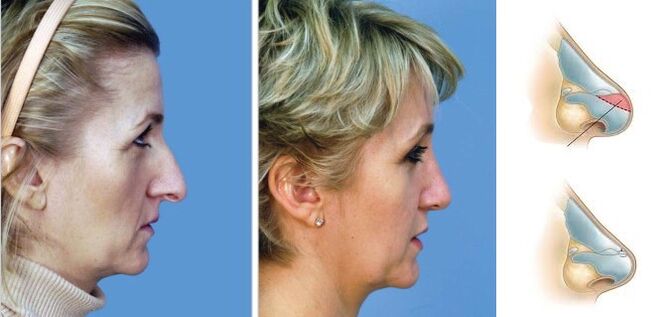 It's impossible.This can lead to undesirable deformations, increasing swelling and problems with tissue healing.
It's impossible.This can lead to undesirable deformations, increasing swelling and problems with tissue healing.
The first four days of the edema will intensify, and then it will start to reach.In order to restrain swelling, it is recommended to be coldly trimmed on the first day.After removing gypsum dressing about two weeks, people will still have discomfort caused by nose edemes.Maybe some loss of sensitivity in the field of surgical intervention.The bruises are still visible.At this point, breathing with nose is already easier. During rehab, the first week, the Rhinoplast surgeon recommends compliance with the following restrictions:
- You can't eat too salty, spicy, sour and second, simple food.
- You can't move your head down, bathe, lift weights (including taking a child or pet heavier than 5 kg.) And charge.
- You will have to sleep only on your back, on a high pillow.
The person will be able to go to work for two weeks after surgery, although it will be necessary to avoid difficult physical work.Therefore, it is best to plan a break for this time to ensure a complete vacation and rest for a speedy recovery.
Within two months after rhinoplasty:
- It is necessary to rinse regularly the nasal cavity
- You cannot be subjected to a serious physical effort, play sports or go to the pool
- You can't drink alcohol
- You can't smoke
- Reduce or remove the use of coffee
- It is forbidden to visit the bathroom or sauna
- It is necessary to avoid direct sunlight on the face
- You can't wear glasses.They affect the shape of the nose bridges, so you need to wait until the bone is completely healed.
Possible complications after rhinoplasty
It is considered a normal country if there are bruises around the operation immediately after the operation and swelling.They are a direct consequence of damage during the surgery of small vessels.After almost two weeks, the primary edema and bruises should already be tidy.
Early complications include the following problems:
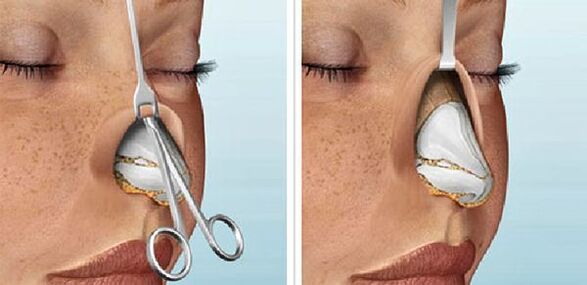
- Bleeding
- Hematom
- Very strong edema
- Fabric necrosis
- Wound infection
- The discovery of seams
- Stiffness of the tip of the nose
If these problems appear, it is necessary to turn in a timely manner to their surgeon attending and start treating and preventing their further development.
Late complications include:
- Perhaps the look of bone corn
- Forming keloid scars
- The opinion of the tip of the nose
- Bifurcation of the top of the nose
- Noseface
- Curvature of the back of the nose
- Asymmetry
- The appearance of the coat of arms on the nose
- Partition perforation
- Breathing
Most of the above complications can be eliminated using repeated work.Some of them appear due to the surgeon's errors, some due to the mistake of irregular behavior of the patient during the recovery period, and the appearance of some is explained by different characteristics of the human body.




















